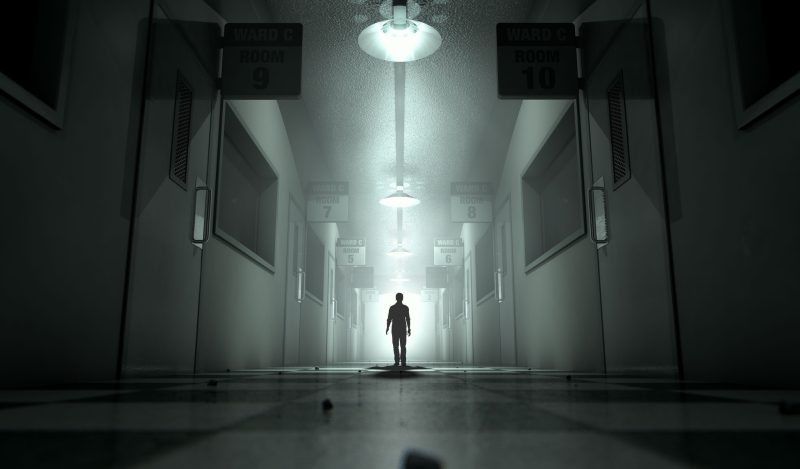On September 15, 2022 — nearly exactly 30 months after President Trump’s federal task force declaration of “15 Days to Slow the Spread,” creating a cascading effect of COVID-centric public health policy down to the state and local levels — a who’s-who of Nashville politicos gathered downtown to applaud and pay service to Metro Nashville COVID-19 Task Force Chair Dr. Alex Jahangir, the man who had become known as the city’s “COVID Czar.”
The occasion: A celebration of the release of Dr. Jahangir’s new book, Hot Spot: A Doctor’s Diary From the Pandemic, highlighted extensively in local outlets with the help of PR firm Finn Partners (formerly DVL Siegenthaler locally), and indeed written by Jahangir with the help of Katie Siegenthaler, a partner of said firm. (Finn Partners’ involvement with the book and the event should not come as a surprise.
Last year, they touted an award won for helping to develop the initial “Roadmap for Reopening Nashville,” the plan announced by Mayor John Cooper in early April 2020 as the fear-driven pandemic response avalanche reached the city. Per public records, Finn Partners have been paid via public funds to run PR for the city since at least 2017.)
The event, much like the book, seemed intended as a victory lap for Nashville leadership, with Mayor John Cooper and Director of Schools Dr. Adrienne Battle alongside Jahangir on the panel. It was also a microcosm of the pandemic response, and the mentality of city leadership that led to it.
“It impacted all of us; I’m no different than you guys,” Jahangir said after describing the hardships of finding a babysitter for his children in the early days of the pandemic, a tone-deaf anecdote in view of the many who lost employment, or had to choose between working a job essential for income or staying home to tend to their suddenly-virtual school children, without the luxury of being able to simply find a new babysitter.
To a crowd which mostly consisted of upper-middle class, politically connected, left-leaning folks, this resonated — it is a crowd which dealt with the same sorts of “hardships” with ostensibly no interest in examining whether the response to COVID (in Nashville or elsewhere) was proportionate to the threat posed by the disease, whether the response could have served Nashville’s citizens better, or whether the course we charted in 2020 even accomplished anything.
In the book — formatted as a “pandemic diary” of sorts, with a smattering of entries attached to specific dates and associated events — Jahangir often brushes up against the costs and second-order effects of the city’s pandemic response while largely avoiding any reflection that might be seen as remorse or apology. In the most jarring example, dated March 22, 2020, Jahangir recalls pulling over on 12th Avenue South on his way to the Office of Emergency Management to announce the city’s Safer at Home Order, overcome with the emotion of it all (emphasis mine):
The shops were closed, fear was palpable, and I knew that in one hour the Metro Coronavirus Task Force would announce an order that would force all of Nashville into more of the same. Though we would call it the Safer at Home Order, it was a lockdown, pure and simple. We had decided to put it in place for at least two weeks, but I had no idea how long it would eventually stay in effect. I did know it would hurt the economy and scare families. Based on my own experiences at the Trauma Center, I was also fearful it would lead to serious mental health issues, including suicides.
Absent from Jahangir’s account is any indication that these concerns were discussed with the broader task force before adopting the plan, or subsequently when determining how long to maintain strict public health orders. These considerations are not mentioned or discussed again in the book’s 200+ pages, despite overwhelming evidence in retrospect that they were well-founded.
A World Health Organization report in 2021 “observed a decline in mental well-being since summer 2020, measured using the WHO-5 mental well-being scale (0–100), especially among those who had lost their job,” and noted that “a review of 23 multi-wave studies similarly found that mental health problems increased during lockdown then decreased slightly after lockdown.” Another meta-analysis of 18 studies found an alarming connection between lockdowns and domestic abuse.
More saliently, as early as the summer of 2020 (a time when Jahangir and others locally could have course-corrected but chose not to), national publications such as the Washington Post relayed harrowing stories such as that of Steven Manzo, laying bare the connection between pandemic job loss and deaths of despair:
Steven Manzo, 33, lost his job at an Irish pub in Mount Clemens, Mich., after it was forced to close just before St. Patrick’s Day. From the apartment he rented above the bar, he described the disquiet welling up inside of him, with nothing to do but stand on the balcony and watch the empty street below.
Manzo spent much of his early 20s struggling with a heroin addiction. It took huge effort — and the help of family members, co-workers and two treatment programs — for him to turn his life around. He secured a job as a cook and bartender and discovered a gift for making customers laugh.
The pandemic took it all away, he said.
Two weeks after Manzo talked to a Washington Post reporter about his sudden unemployment, he was found dead in his apartment of an apparent overdose.
“He was clean for eight years. He would always tell me, ‘My trigger is depression. That is my trigger,’ ” his mother said.
This manifested locally in Nashville to the tune of a 25% increase in overdose deaths from pre-pandemic baselines, mostly at ages for which very few COVID deaths were recorded.
As the book’s timeline progresses, Jahangir’s tone grows more stern and defensive, chiding those who would grow to resent the task force and school district for their decisions in the face of very real concerns which he acknowledged from the outset, casting those who voiced them as “bullies,” or “COVID deniers,” or far-right conspiracy theorists.
Perhaps he grew weary and hardened from criticism, some of which surely was unfounded. Or perhaps he simply fell back into his old “coping mechanism since childhood: I block out the bad things that happen to me” (pg. 47). Unfortunately, this comes at the expense of meaningful discourse: Should we have incurred these costs?
Throughout the panel discussion at the book launch, as well as in the book itself, equity is a major focus. Jahangir is right to point out that many causes of mortality and morbidity impact minorities disproportionately due to a combination of socioeconomic factors, access to care, and historical injustices. He does not, however, examine with any real interest how the task force’s decisions during the pandemic impacted these inequities.
In another example of obtuseness or dissonance, Jahangir highlights one primary way in which inequities in other aspects of health care were extended to the COVID-19 pandemic by virtue of bad public health policy:
Along with the Black community and for many of the same reasons, immigrants were at higher risk for COVID than White Nashville. Members of these communities tended to fall into the category of “essential workers,” a nice way of describing low-wage earners we take for granted but can’t do without. Their jobs do not allow them to stay home and often afford them no benefits.
Jahangir fails to reach what would appear to be a fairly straightforward conclusion: The city’s “Safer at Home Order” did nothing to protect these people. In fact, it pushed the burden of the disease onto them, and away from more affluent segments of the population who were better equipped to hunker down at home with virtual work until the arrival of vaccines and therapeutics.
Jahangir also recounts the days after the death of George Floyd at the hands of a Minneapolis police officer, which sparked protests and unrest in Nashville, thusly:
I thought about the fact that George Floyd had just been let go of his job as a bouncer. The bar where he worked had been forced to shut down due to the pandemic. It was one of those jobs that gives a person a tenuous hold on stability. Once gone, stability vanishes overnight. (emphasis mine)
Here as elsewhere, the framing of this series of events as an inevitable consequence of the pandemic is intentional and unfounded. Local officials — not the COVID-19 virus — shut down the bars which employed Steven Manzo and George Floyd, among countless others. This is important if we want to answer the question of whether we actually accomplished anything by closing bars, restaurants, schools, and myriad other staples of modern society in an effort to reduce deaths and despair from COVID-19. A Johns Hopkins meta-analysis of 24 peer-reviewed studies concluded that
lockdowns have had little to no public health effects, [and] they have imposed enormous economic and social costs where they have been adopted. In consequence, lockdown policies are ill-founded and should be rejected as a pandemic policy instrument.
Paying lip service to equity by merely acknowledging its existence and actually doing something to address it are two different things. Jahangir and other city leaders have done plenty of the former, but their decisions during the pandemic to close businesses, public services, and (as discussed below) schools only served to exacerbate existing inequities.
Post-hoc efforts to extend communications, aid/support, COVID-19 tests, and vaccines to historically underserved communities may have been well-intentioned, but did not do nearly enough to counterbalance the damage done to these same communities by such drastic measures.
Dr. Jahangir has another brush with reality in his acknowledgement in an April 15, 2020 entry that virtual learning was, in his words, “filled with inequity”:
All of the burgeoning solutions assumed two things: that children had access to technology and that at least one parent would be home to essentially co-teach. Yet too many children did not have internet access or a computer in their home; or, if they did, they shared it with multiple siblings. Too many parents did not have the luxury of working from home. And too many homes were not safe havens. For a lot of children, school was the place they counted on for security, along with a good square meal.
Helen and I realized we were among the fortunate families that the emerging virtual education system was designed to support. We knew we were lucky, which made us feel worse instead of better — driving home for us that the families least able to cope with hardship seemed to be the ones that always saw the most. (emphasis mine)
Here as elsewhere, it does not occur to Dr. Jahangir that perhaps foisting these hardships onto families may have outweighed any possible benefit of the measures he oversaw. A 2021 UNICEF report on the effects of school closures globally notes that “School closures led to significant learning losses that risk exacerbating inequalities between students, both within and across countries, with potentially detrimental long-term life outcomes for children.”
But he was right to note that virtual learning was hard for his children, too: A study of pandemic-era learning loss in the Netherlands found that despite “a short lockdown, equitable school funding, and world-leading rates of broadband access … we find that students made little or no progress while learning from home.” As it turns out, virtual learning worked for no one — which is why many European nations prioritized reopening their schools before anything else.
Perhaps Jahangir’s most vocal critics, at least from summer 2020 on, were those who saw him as partially responsible for Metro Nashville Public Schools remaining virtual for far longer than neighboring school districts — indeed, they were among the last two districts in Tennessee to bring all students back to in-person learning.
Jahangir has largely avoided discussions of specific policies or public health measures in his book release media tour, but did take the opportunity to distance himself publicly, calling this criticism over school decisions “misinformed” as he “wasn’t involved in the school decision, per se,” a point which he expands upon in the book.
“Per se” is doing a lot of work in this description of Jahangir’s role in local school decisions. Jahangir was involved in his work with schools director Battle as early as June 2020, with his signature affixed to the school district’s original “Nashville Plan: Framework for a Safe, Efficient, and Equitable Return to School”. This plan called for alignment between the city’s “Roadmap” phases for lifting restrictions on businesses and gatherings and the school district’s operation mode; not ideal, but at least logically consistent.
Fast forward to August 2020 — after a tumultuous summer in which the American Academy of Pediatrics issued guidance urging school districts to reopen their doors, before turning an abrupt about-face brought about by a certain political leader’s entry into the debate — and we find Jahangir’s friend, fellow task force member, and foreword author, Dr. James Hildreth, issuing a stern warning for local parents who are considering what’s best for their children:
It is now beyond dispute that children can be infected, will be infected, some of them will get sick, and unfortunately, as we know, some of them will also die.
Hildreth, who is effusively praised for his “awe-inspiring” leadership both as a task force member and as President of Meharry Medical College (the “one medical institution Black Nashvillians do trust,” per Jahangir), could only have terrified minority families with this statement. Yet in one of several glaring omissions to the historical record, Jahangir fails to note the effect Hildreth may have had on the psyche and disposition of minority families towards returning to the classroom, instead choosing to frame the tensions of late August as a conflict between “one group of parents, mostly from disadvantaged communities with high minority populations” who “wanted school buildings closed” with another “group of mostly White parents, who tended to donate funds to their local public schools … demand[ing] their kids be allowed back into their school buildings.” (Jahangir fails to mention that the two school board members who attended the late August reopening rally which he characterizes in this manner were African-American.)
In the district’s June report, co-signed by Jahangir, there are 10 references to studies from Europe, the CDC, and elsewhere which “suggest that serious COVID-19 illness in children is rare” and found “very low rates of transmission from a child to more senior members of the family.” Yet by August, Jahangir begins casting the reopening debate along socioeconomic, racial, and political lines, emblematic of the broader national discourse surrounding schools.
Given the political persuasions of the local aristocracy, Metro Nashville Public Schools remained closed until October, when a brief glimmer of hope shined through in the form of the district’s youngest students being invited back to class. Having two months to observe that in-person learning had not invited disaster in neighboring school districts, and having heard the many evidence-based pleas (including my own) to reopen Nashville public schools, Jahangir had an opportunity in his capacity as task force chair and district health adviser to correct course, to advise Dr. Battle and the school board that in-person learning was essential for students.
Instead, he provided them all the cover they needed to entrench.
Just two days after welcoming its youngest students to the classroom, Metro Nashville’s school board called a special session, to be held on a Friday afternoon with less than 24 hours notice, and without public comment. In attendance was Dr. Jahangir, providing testimony to the board which would result in the district indefinitely postponing the return of grades 5–12 in public schools. These students ultimately would not see the inside of a classroom until nearly a year after the doors were shuttered in March 2020.
At the book release event, schools director Dr. Adrienne Battle credited Jahangir with his help in “developing the metrics, and the plan, by which we would make the decisions around in-person and virtual” learning, just as she had at the time of the release of a new “COVID Risk Score” in a November 23, 2020, school board meeting. This coincided with an announcement in the same board meeting that all students would remain virtual from Thanksgiving break until after the new year.
Jahangir is technically correct: He didn’t make the decision to keep Metro Nashville Public Schools closed, “per se.” He did, however, advise that body’s board and director at every turn for nearly a year as a public health official whose voice carried substantial weight. Along the way, he shielded from criticism a schools director and board hellbent on maintaining COVID orthodoxy at the expense of the one populace the school system exists to support: children.
Jahangir’s omission of key details in the timeline of school skirmishes is just one of several holes in the public record; as summer turns to fall, his entries become increasingly sparse, his tone increasingly frustrated with his critics. The details omitted tend to cast Jahangir, Nashville Mayor John Cooper, and the rest of the task force in a flattering light, as stalwart, stoic scientists rather than as reactionary political figureheads.
Consider, for example, his brief description of Nashville’s move to “Phase 3” of the reopening plan, in an entry dated September 28, 2020:
By the end of September and with COVID case numbers trending downward in fits and starts after a summer outdoors, the Task Force and the Mayor’s Office felt the time was right to try to move into Phase Three again.
A naive reader may take Dr. Jahangir at his word here, unaware that a local news story had blossomed into a national one, culminating in a Metro Nashville Councilmember’s appearance on FOX News’ Tucker Carlson Tonight, just 6 days prior to the city’s “Phase 3” announcement. One might be excused for drawing a connection between the two events, with the Mayor’s office in full damage-control mode in the days that followed.
And then there is Jahangir’s treatment of a $14 million no-bid contract awarded by the school board to Meharry Medical College Ventures, a for-profit arm of Meharry which (Jahangir fails to mention) was established just weeks prior to being awarded the bid. The plan, Jahangir notes, was “successfully implemented” as evidenced by the district’s return to the classroom in 2021, owing to “a combination of testing and contact tracing.”
However, at the time the plan was approved by the school board, it looked substantially different than the contract which was ultimately executed. According to information released via public records request, the draft contract circulated to MMCV representatives from the school district’s central office on Friday, January 8, 2021, included the following language:
Contractor will work with the Metro Public Health Department to develop a vaccination plan for all those at MNPS who are eligible, as determined by the State of Tennessee, and those at MNPS who desire to take the vaccine.
The Contract Term will begin on January 13, 2021 and end on December 31, 2021.
The following Tuesday, January 12, the school board discussed this contract, with more than half of the discussion centering on the topic du jour: Vaccinations. The contract was approved as part of the meeting’s consent agenda.
A month later, The Tennessean reported that “MNPS teachers and staff, including charter school employees, will be scheduled and vaccinated by Vanderbilt University Medical Center,” not by Meharry as discussed in the January 12 meeting.
The final version of the contract, dated February 15, appears with the “vaccination plan” language removed, as well as a reduced term: The contract would now end on June 30, 2021. Despite this change, the amount of the contract (up to $18 million) remained unchanged. This aspect prompted follow-up from several school board members at the subsequent March 9 board meeting; however, despite these and other concerns, Jahangir waves away criticisms from “fiscal watchdogs,” implying ulterior motives of those asking the questions: “MNPS’s contract with Meharry was the only one that generated [an] outcry.”
The above might seem to be intensely uncharitable to Alex Jahangir. Certainly, his willingness to volunteer his time in a position for which no one in the city of Nashville could have possibly been prepared is laudable. He also gets some things right in the book, including his criticism of Tennessee Governor Bill Lee’s unwillingness to staff “alternate care sites” which were built out in summer 2020 but never activated in the height of the state’s pandemic wave the following winter.
I believe Jahangir is well-intentioned and cares deeply about his community. I believe that harsh, personal criticisms, such as the cries that he “hates” children, are unfounded and over the top.
I also believe Alex Jahangir, like many others in similar positions of leadership and crisis management in 2020, quickly lost sight of public health as a holistic, all-encompassing objective meant to serve all members of a deeply interconnected society, instead focusing narrowly on COVID-19 case counts and mitigation efforts.
I do believe that Alex Jahangir used coping mechanisms to “block out” criticism of his actions and the actions of Nashville’s COVID-19 Task Force, no matter how well-founded. I do believe that Alex Jahangir allowed broad public wellbeing to be replaced by politicized talking points, or perhaps, by a desire to be proven right, to be hailed as a humble local hero, an American native son who did what he felt he needed to in a time of crisis.
If his book is any indication of the true thoughts and feelings of the author, he does not shoulder the weight of any regrets, or have anything meaningful to say on the topic of what they may have gotten wrong, and what we as a society may want to approach differently in the next emergency. That is not because he lacks empathy; rather, it is because he has actively avoided reflection on the matter. Hot Spot is a carefully polished effort to preserve the historical record as he wishes it to appear, rather than as it actually was: A mess of convoluted, intrusive orders which appealed to science without invoking its tenets, which accomplished little, and which created a host of negative side effects. For that, its readers are strongly encouraged to seek a second opinion.
Published under a Creative Commons Attribution 4.0 International License
For reprints, please set the canonical link back to the original Brownstone Institute Article and Author.









